Motivational
Father Son Bond Creates Buzz: The Flow Hive Success Story
Published
3 months agoon
Flow Hive
Flow Hive is the most revolutionary invention in beekeeping in history.
The innovation allows beekeepers to tap into honey directly from the hive without the mess and expensive processing equipment inherent in traditional beekeeping.
However, the invention goes beyond simply streamlining the harvesting process. The idea of Flow Hive started when founder Cedar Anderson was just a boy. He wanted to save the bees from being crushed when harvesting honey, and he and his father eventually created a very successful business from it.
How Does Flow Hive Work?
Before Flow Hive, the extraction process of honey involved breaking the hive to get to the honeycomb cells, manually removing the beeswax to get to the honey, and then using an extractor to collect the honey.
By comparison, Flow Hive uses Flow Frames, which the honey bees fill with wax and form honey on. When honey is formed, a Flow Key is inserted and rotated, which allows honey to flow right out of the Flow Frame and into a cup or jar, similar to turning on a faucet.
No breaking, no mess, no expensive processing equipment, and for those who would like to save the bees, no disturbed bees.
A Father and Son Bond is an Incredible Thing
Flow Hive’s are like a mini house that even the most spirited bees would be happy to call their home. Founders Stuart Anderson and his son Cedar come from three generations of beekeepers. This culture formed a father-son bond, creating the most innovative invention in beekeeping history.
How Did Flow Hive Start?
Flow Hive started in the mind of Cedar when he was just a child who felt bad that so many bees were being crushed while harvesting honey.
Imagine, a young boy raised to admire the social creatures that have sustained his family’s livelihood for three generations, and some of those very creatures are being harmed in the process.
A child’s innocence is a remarkable thing, but who would have known that it would become such a lucrative business?
“The first idea was simply that there must be a better way, and I’d been thinking about that from a very young age.”
That idea—brought about by a feeling in a young boy’s heart—eventually created the prototype which broke crowdfunding records.
Within 10 minutes on Indiegogo, they had surpassed their goal of raising $70,000, and within 15 minutes, they had already raised $250,000.
The campaign raised a total of $14,959,087, making it one of the most successful crowdfunding campaigns in history.
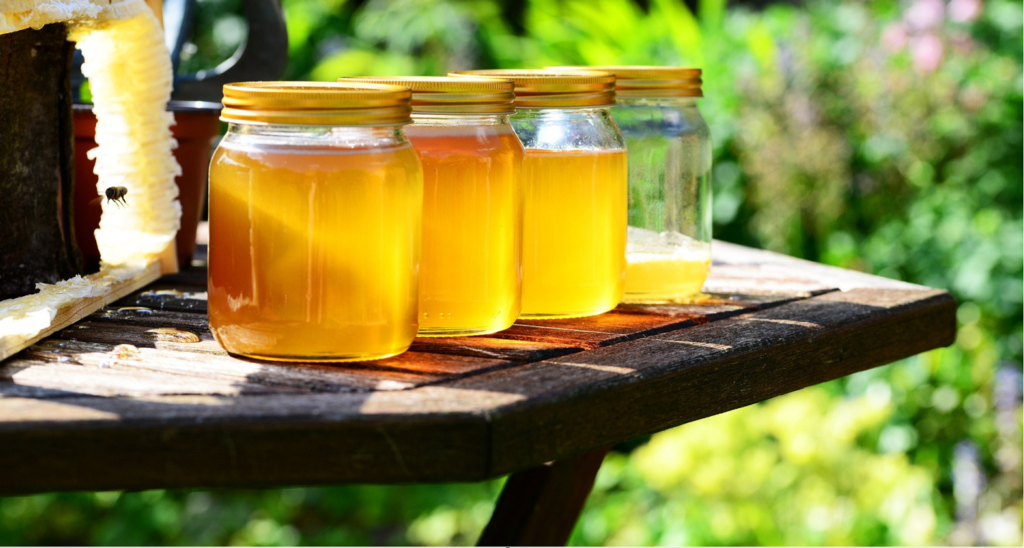
IC INSPIRATION
Did you know that bees are an endangered species?
While learning about Honey Flow, I was particularly interested in why people become beekeepers in the first place.
A prominent theme went along these lines: “I noticed that I would only see one bee whenever I was outside enjoying the beautiful summer day, and I wanted to change that.”
Upon hearing this three times from individuals who don’t know one another, I began to really understand the disposition that almost seems to be an intrinsic part of the beekeeping culture.
To some, the absence of bees means not getting stung. But to others, it is something much deeper: it is the absence of purpose.
Bees have a purpose, and beekeepers create an environment where the bees can carry out their life’s purpose, so their purpose behind beekeeping is worthy of an inspiring click!
But did you know that not all bees are endangered?
The truth is that honeybees are abundant, but native bees are endangered.
Human industrial activities have affected all bees, but honeybees have been able to flourish because so many people have taken to beekeeping. So, while human activity has caused bees to become endangered, human activity has also caused them to flourish in abundance.
But despite this, honeybees compete with wild bees for resources, and the difference in the numbers of the two species can further push native bees toward extinction.
We are capable, yes! But with awareness, we can truly make the difference that we want.
There are 20,000 species of bees, and only one that makes honey, but while there has been so much attention given to honeybees, we are among amazing people who dedicate their lives to solving the real issues.
If you would like to gain more knowledge about endangered native bees and even come to know how we can save the bees, then inspiration is just a click away!
Adam Hamadiya is an entrepreneur, professional writer, and SEO expert. He is the co-founder of inspiringclick.com.

You may like
-


Sora AI is Every Content Creators Dream. Its Almost Here!
-
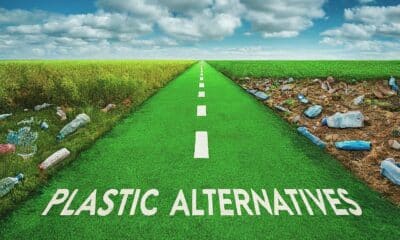

Top 5 Genius Plastic Alternatives to Help Save the Planet
-


A Talking Lamp? Top 5 Unbelievable AI Technologies in 2024
-
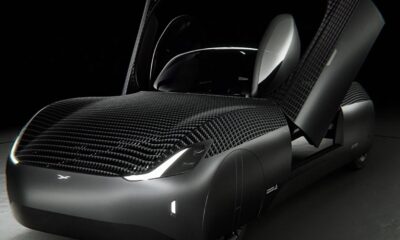

Alef Model A Flying Car Pre-Orders Surge to a Whopping 2,850
-


Hemoglobin Battery Gives 30 days of Sustainable Power by Using a Protein Found in Blood Cells
-


Smart Cane Revolutionizes Blind Navigation Like Never Before
Motivational
3D Printed Organs Save Woman’s Life and Accidentally Pave Way for Biology-Powered Artificial Intelligence
Published
3 weeks agoon
8 April 2024
A Great Advancement for 3D Printed Organs
3D printing in hospitals is nothing new, but for the first time in history, a woman received a 3D printed windpipe that became a fully functional without the need for immunosuppressants.
Immunosuppressants are used during organ transplants to keep the body from attacking the organ that it see’s as foreign. This means that the organ the woman received was organic and personalized for her, as if she had it her entire life.
This mind-blowing news shows that we are now closer than ever to being able to create full-scale, functional, and complicated 3D printed organs like a heart or lung.
But what about creating a brain?
3D Printing and Organoid Intelligence
Organoid Intelligence, or OI, is an emerging field of study that is focused on creating bio-computers by merging AI with real brain cells called organoids. Organoids are miniature and simplified versions of organs grown in a lab dish. They mimic some of the functions of fully grown organs, like brains. The idea behind OI is that by increase the cells organoids contain, they may begin to function like fully grown brains, and can then be used alongside computers to enhance Artificial Intelligence.
It turns out that the world’s first 3D printed windpipe was so successful that we are now closer than ever to creating the world first organoid intelligent bio-computer.
Here’s why.
The World’s First 3D Printed Windpipe
Transplant patients usually have to take a long course of immunosuppressants that help the body accept the organ. The body see’s the organ as foreign, and so the immune system begins to attack the new organ, which can lead to more complicated health problems.
The woman in her 50’s who received the 3D printed windpipe did so without any immunosuppressants. In just 6 months after the operation, the windpipe healed and began to form blood vessels, and of course, more cells.
The current goal of scientists in the field of Organoid Intelligence is to increase organoids from 100,000 cells to 10 million, and this begs the question:
Can 3D printing help build bio-computers by creating better organoids?
Can 3D Printing Help Build Bio-Computers?
The worlds first 3D printed windpipe shows that advances in 3D printing can create better functioning organs, and this implies that we can also create more intricate organoids to help in the field of Organoid Intelligence and eventually create bio-computers.
Its important to understand the distinction between 3D printing an organ and printing something like a tool or musical instrument.
The difference between printing an organ and printing a non-biological structure depends on the ink being used in the 3D printer.
3D printing non-organic structures will require ink that can be made from plastic, plastic alternatives like PLA, metal, and ceramics. On the other hand, 3D printed organs are made from ink called “bio-inks” that are a mixture of living cells and biocompatible substances like the ones mentioned above.
In the case of the 3D printed windpipe, the ink used was partly formed from the stem and cartilage cells collected from the woman’s own nose and ear. It was because of this bio-ink that the woman’s body did not reject the organ.
The Problem With 3D Printed Organs
Organs created with bioprinting need to function like real organs for the body to safely use them, and this does not happen right away.
The 3D printed organs need to go beyond just a printed structure and become living. They need to form tissues and cells that help create biological functionality, and forming these cells take time.
The problem with 3D bioprinting is that the ink used for the printer needs to be effective at doing this, and if it is not, the organ may not stay functional.
The ink used for the 3D-printed windpipe was made from part bio-ink and part polycaprolactone (PCL), a synthetic polyester material.
PCL is a used in the 3D ink for the purposes of maintain the structure of the windpipe, while the bio-ink is used to help the 3D printed organ to become fully biological in time so that the body can use it.
The PCL maintains the structure while the bio-ink does it’s thing.
The problem with PCL is that it is biodegradable and won’t last forever. In fact, doctors don’t expect the 3D-printed windpipe to last more than five years.
The Solution is Better Bio-ink
The 3D printed windpipe was not just made using PCL, but it contained bio-ink made from living cells too. The hope is that the living cells in the 3D printed organ—which came from the bio-ink—will assist the patient’s body in creating a fully functional windpipe to replace the PCL’s function.
If the organ begins to form cells and tissue by itself, then the function of PCL will be replaced by the biological function of the organ that is growing.
The organ becomes real!
Bio-Ink helps the 3D printed organ mimic it’s natural environment of cells and eventually become a real organ.
3D Printing Organs Will Save Lives
Every year, thousands of people need a lifesaving organ transplant. These transplants cost hundreds of thousand of dollars, and many people who need them don’t make it passed the waiting list.
3D Printing organs could give people the incredible opportunity to receive the help they need when they need it, saving thousands of lives annually, and millions of lives in the long run.
As advances are made in 3D Bioprinting, they will also be made in areas of Organoid and Artificial Intelligence, which shows that the progress being made in one place will once again shine its way to another.
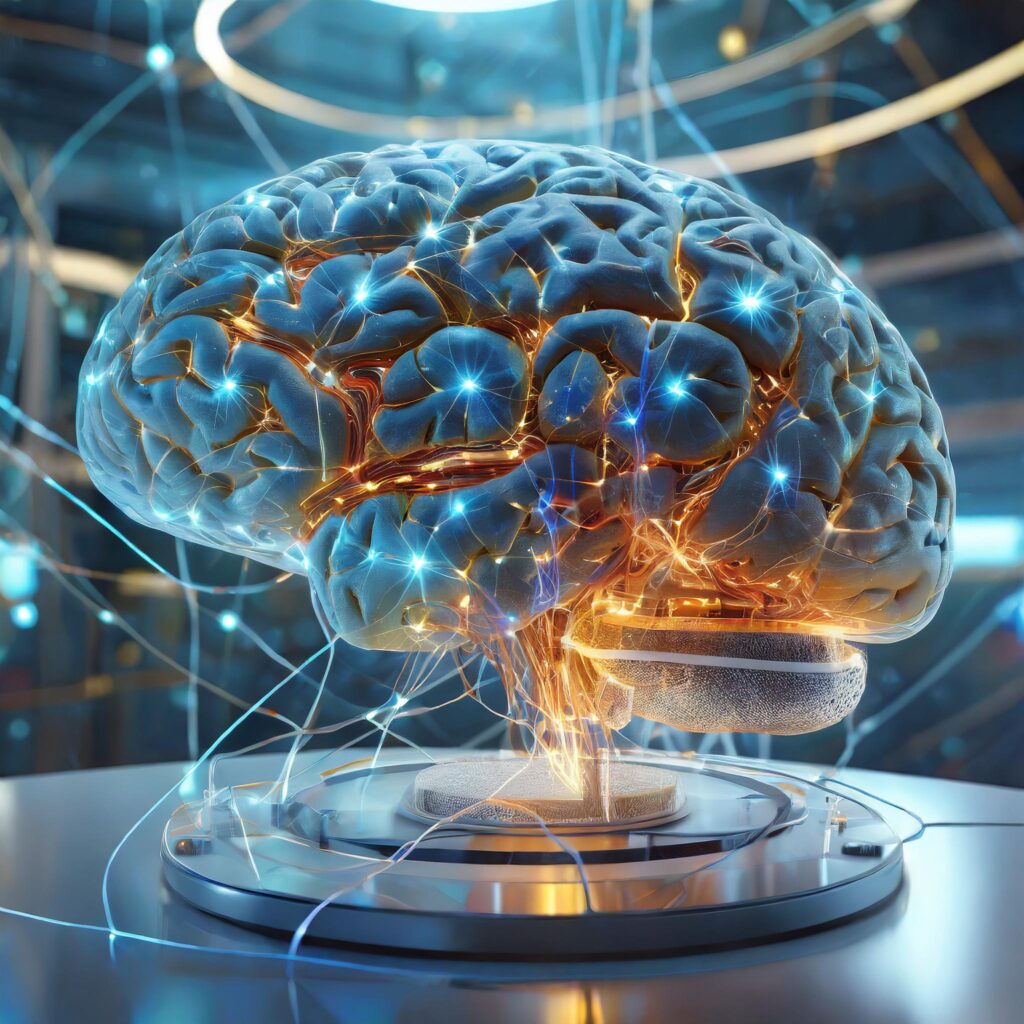
IC Inspiration:
If we can create better forms of bio-ink and produce fully functional organs using 3D printing, we will fundamentally change the entire health care system.
17 people die every single day waiting for an organ transplant, many of whom can’t afford the transplant in the first place.
The biggest hope in the world for everyone that is affected by this is that organs can be produced when they are needed, ending the transplant shortage and saving the incredible lives of millions of people in the future.
We have seen from this story that personalized organs made from a patients own cells can stop the bodies rejection of organs. This shows us that there will come a time when there will be no need for immunosuppressants therapy.
Even more amazing is that doctors use 3D printing to practice performing a surgery so that they can sharpen their skills before the surgery. This also helps them find better pathways for performing the surgery.
Think about it… If you can’t use a real organ to practice on, then 3D organs are the next best thing.
The production of organs, the irrelevancy of immunosuppressants, and more efficient surgery will eventually drive down the prices of transplants, and 3D printing organs in the future will not only save lives, but it will also increase the quality of those lives afterwards.
That is the sort of world we can create. It’s amazing to think of all the good that is being done right here, right now.
Motivational
2024 Signals a Clean Energy Future Despite Hottest Year Ever
Published
4 months agoon
15 January 2024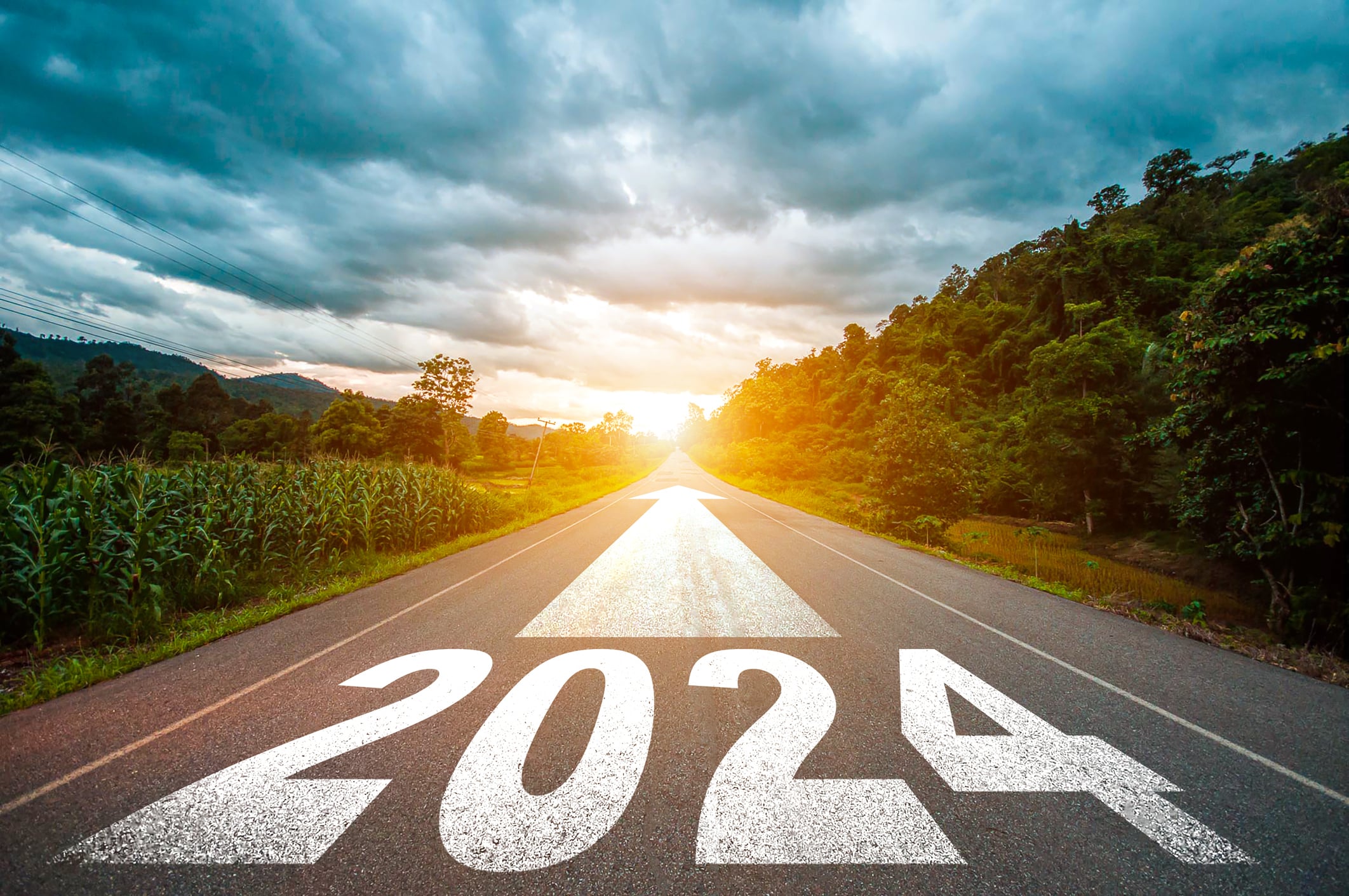
Table of Contents
Rising Heat Rising Hope
There is a lot of gloom and doom when people speak about the future of climate change, but a clean energy future is happening right now, and the journey that led up to is remarkable.
There are some really good reasons to be hopeful about the future of renewable energy and climate change, it just needs to be looked at from a clear and new perspective.
Let’s start with 2023.
2023 Was the Hottest Year on Record
In 2015, 194 nations came together and set a goal to limit the global rise in temperature to 1.5°C above pre-industrial levels. In 2023, global temperature rose to 1.45°C above pre-industrial levels. While it did not reach 1.5°C, 2023 was the hottest year on record for Earth.
2024 is the Tipping Point for Clean Energy
1.5°C is considered the tipping point for climate change. Some scientists regard this number as the point where global warming begins to have the strongest effect on the Earth. While this might seem like a catastrophe, the world is beginning to see a shift toward a clean energy future. 2023 was the hottest year on record, but it was also the year where renewable energy grew by 50%. This growth is expected to rise in 2024 and further into the future.
Rarely do good things happen without a little bit of adversity—even flowers bloom from soil and manure. A clean energy future is happening right now, and things could not have happened any better. Here’s why.
Why Did Global Warming Happen?
Global warming is the result of burning fossil fuels, and fuel was necessary for advancing the human race. The history of modern civilization is marked by industrial revolution. The first revolution transitioned the world from an agrarian economy to a manufacturing economy. This had a major impact in advancing medicine and sanitation, both of which largely determine life expectancy. It is because of the industrial revolutions that the average life expectancy has nearly doubled in the last century.
But the backbone of the industrial revolution is fuel. Without it, climate change wouldn’t be a problem and the need for renewable energy would not exist. However, life expectancy would be very low, and technology would not have progressed.
You probably would not even be here right now, but you are, and you should be hopeful!
Clean Energy Future
Even though 2023 was the hottest year on record, data shows that the market size of renewable energy is constantly increasing every year. This forecasts a clean energy future on the horizon, and it is marked by lower costs of energy as well as a better quality of life.

Something that shoots up consistently year after year is often too good to be true. In fact, this is exactly what the Berny Madoff Ponzi scheme looked like.
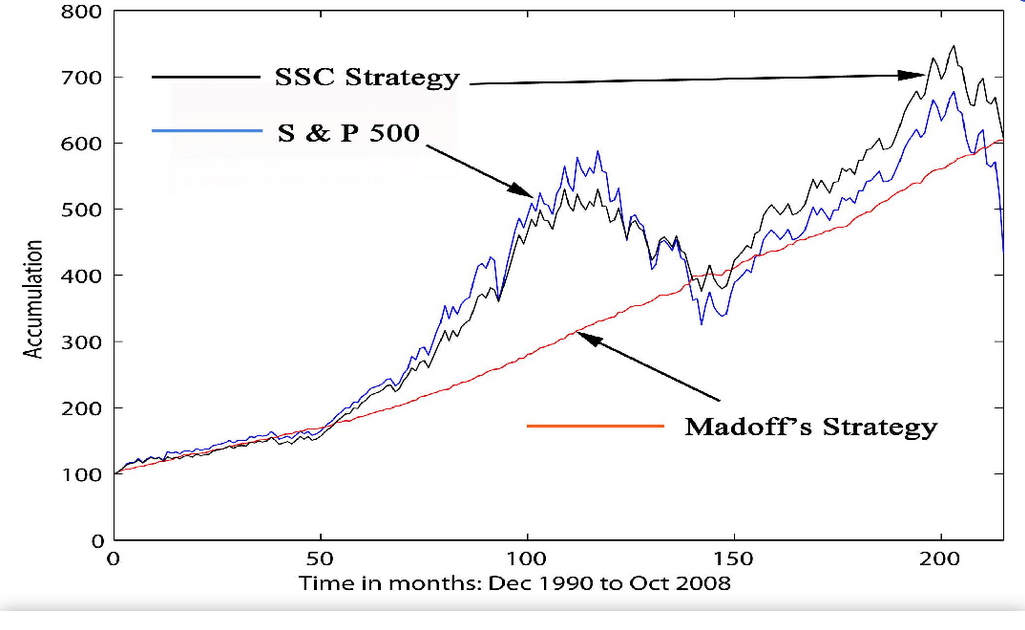
The future of renewable energy looks like the Berny Madoffs Ponzi scheme on paper. It looks so good, that if I gave it to you as an investment fund, it would be completely bogus because it would be too good to be true.
If you ever see an investment graph that shoots up like this, run! But now that you’re seeing it as real progress, you should be happy! It shows that a clean energy future is closer than you think.
Clean Energy is Now Cheaper Than Fuel
While the use of renewable energy has increased, its cost has decreased at about the same rate.
In 2010, the cost of wind energy was 95% higher than fuel-power. Now, its price is more than 50% lower than the cheapest fuel-powered option.
In 2010, Solar energy was 710% more expensive than fuel-power. Now, it’s price is more than 29% lower than the cheapest fuel-fired solution.
How Much Money Can Clean Energy Save?
Renewable energy saved $56 billion in 2022 in the U.S. alone. This amounts to more than $1 trillion saved by 2050. Data shows that the learning rate for solar and wind technology has been remarkable. These Improvements can further increase the $56 billion figure. It is estimated that by the year 2050, nearly $11 Trillion worldwide will be saved by transitioning to renewable energy.
Why is the Price of Clean Energy Going Down?
The price of clean energy is going down because the learning rate of the renewable energy sector is increasing. People are learning how to create and manage infrastructures like solar panels and wind turbines in a more efficient way. This efficiency reduces the cost associated with renewable energy and makes the use of clean energy more widespread.
In other words, things are getting better because people are getting smarter.
What is the Future of Renewable Energy?
We are currently in the fourth industrial revolution—the revolution of the Internet and renewable energy. The future of renewable energy is that it will create the next industrial revolution in a shorter amount of time than the previous one. This is because the internet is increasing the rate of technological advancement. Technology is what leads to revolutions, and it is growing faster than any other time in history.
History is Predicting a Clean Energy Future
Revolutions mean progress, and each of the 4 industrial revolutions have used fuel as its backbone. The only thing that changed was the kind of fuel that was used, and each revolution used a cleaner source of fuel. Moreover, each industrial revolution happened faster than the previous. History is predicting a clean energy future.
- Industrial Revolution 1765: Coal- Coal is the worst fuel and contains much more carbon than gas. Consider that CO2 emissions weigh more than the fuel that creates it, and it becomes clear to see why coal is the dirtiest fuel.
- Industrial Revolution 1870: Gas- After coal mines came cars. Car's need gas, and although gas has been used as the primary source of energy, it is much cleaner than coal.
- Industrial Revolution 1969: Nuclear- Nearly a century later, nuclear energy was created. Nuclear does not emit any CO2, and therefore, is much cleaner than the first two revolutions.
- Industrial Revolution 2000: The Internet & Renewable Energy
It took 105 years to go from coal to gas, 99 years from gas to nuclear, and only 31 years from Nuclear to renewable. How long until the next revolution? If history is any indicator, then it will be less than three decades.
A clean energy future is closer than you think, and the progress that has been made is mind-blowing. Be hopeful!

IC INSPIRATION
A clean energy future is built on a not so clean past, but we have come a long way. Very rarely can humans get things right the first. Life, much like history, is a process.
Here's the fact: humans are not rational beings... We are rationalizing beings.
We make sense of things as they happen because we only understand what those things truly are after they have happened. We can't be rational enough to know the future, but we learn afterwards.
Fuel has gotten us so far, and the world of information often paints a gloomy picture without appreciating the progress. Here's a question:
Can we make sense of something before it happens?
Renewable energy came after fuel, but was it even possible to start with renewable energy?
If not, then could things have been any better?
Heroes are not born, they are made. Humans were born to make history, and even though there are downsides, this progress shows that a brighter and cleaner future may not be so far off.
Motivational
Brittany’s Baskets of Hope: Showing That Children with Down Syndrome Have Enormous Potential
Published
5 months agoon
6 December 2023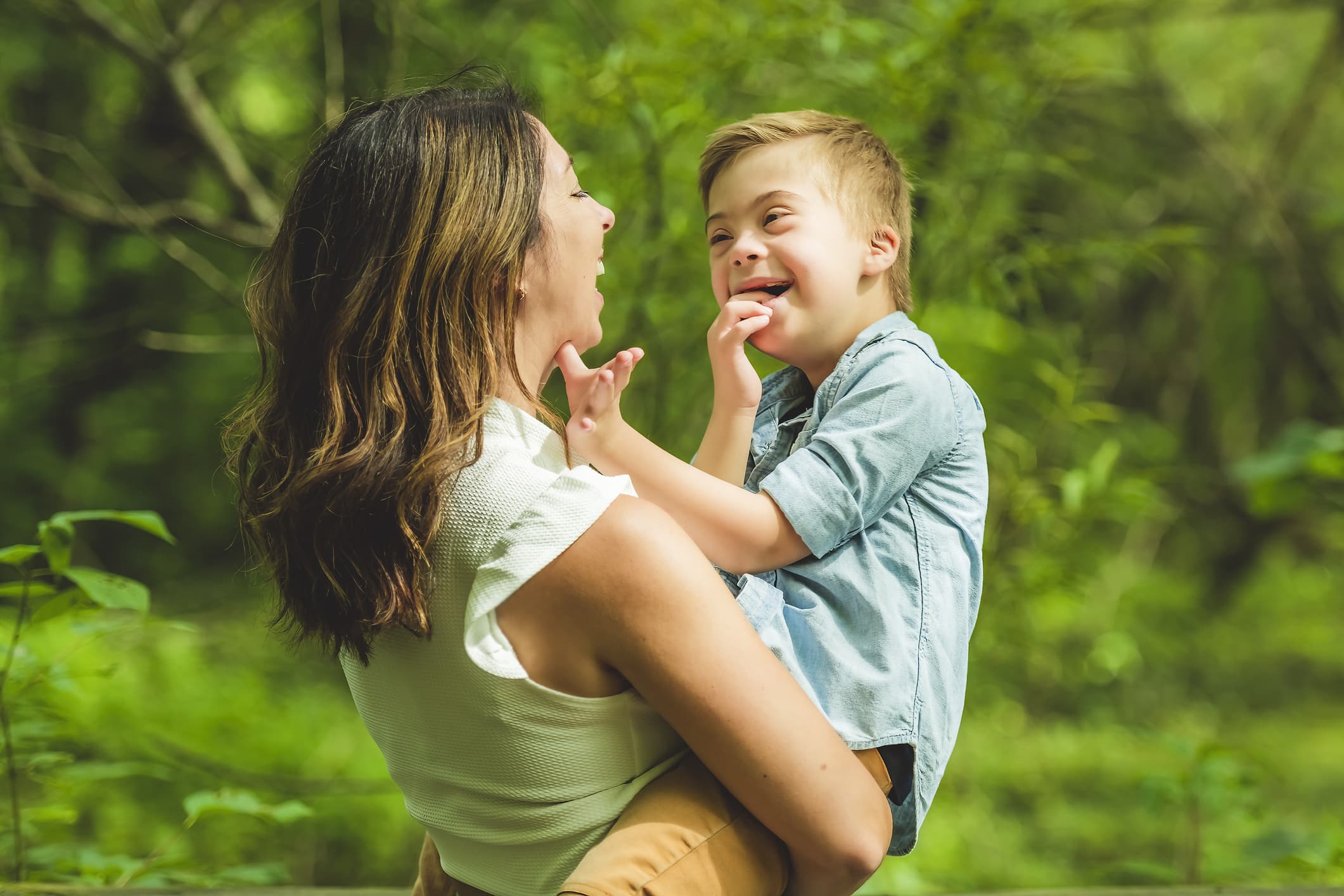
Brittany’s Baskets of Hope
“We believe that all babies, no matter who they are or how they’re born, deserve to be celebrated and to know that they can achieve anything!”
These inspiring words appear on the website for “Brittany’s Baskets of Hope”. This small organization has an important message to share with families of babies who have Down syndrome. It’s a message that comes from the heart of founder and owner Brittany Schiavone.
Brittany, a native of Long Island, is one of the world’s most successful entrepreneurs with Down Syndrome. She understands what these families are going through intimately, and she created Brittany’s Baskets of Hope as a result.
What is Brittany’s Baskets of Hope?
Brittany’s Baskets of Hope is a non-profit organization that provides information and support to families that have children with Down syndrome.
Baskets are given as a gift to parents who are raising or expect to have a child with Down Syndrome.
These baskets include headbands, swaddles, hats, toys, and baby books. They even include a onesie that says “downright perfect”, and handmade blankets, donated by volunteers across the United States.
How Did it All Start?
The inspiration for Brittany’s Baskets of Hope began when Brittany saw a video about parents who needed support after having a Down syndrome child.
“I went home and told my parents that I wanted to help mothers of babies with Down syndrome; I wanted to give them hope.”
Her parents and older brother, Justin, were all on board. All are active on the board of directors for Brittany’s Basket of Hope.
The initial plan was to give a basket as a gift to local parents of children with Down Syndrome. In 2016, Brittany delivered her first basket to someone in her area. Then, the media drew attention to what Brittany was doing. Soon, something amazing started happening. Requests for baskets started pouring in from all over the United States.
Of course, it was not possible for Brittany to personally visit all these places. So, Brittany’s Baskets of Hope adopted a mail-out model. Today, Brittany has sent over 1900 baskets to all 50 states. They’ve also begun expanding outside of the U.S and into Puerto Rico.
Who is Brittany Schiavone?
When a new baby is born, people usually extend congratulations and good wishes to the mother. When Brittany Schiavone was born in 1989, she was diagnosed with Down syndrome. All her mother heard from family and friends was “I’m sorry.” This was followed by a list of things Brittany would never be able to do.
Today, Brittany has completely defied the doctors’ predictions. She is a high school graduate with plans to attend college courses. She was a pioneer student in her school district’s classrooms. She’s participated in gymnastics, horseback riding, and dancing. She’s even swum in the Special Olympics.
Among the most amazing accomplishments is that Brittany run’s her own non-profit organization. She is hard at work making sure that no newborn baby is ever again greeted with the words “I’m sorry”.
How do Brittany’s Baskets of Hope Help Parents?
The arrival of a newborn baby is an exciting and stressful time for any family. But for the parents of a child with special needs, it’s a unique challenge.
Parents of these children are often unsure what to expect for their newborn child. They’re full of questions and, often, worries.
Brittany’s baskets of Hope brings these parents answers and reassurance to these families.
One of the key items in the baskets is a book that Brittany’s parents started out with when she was a baby. It’s called Babies with Down Syndrome: A New Parents’ Guide edited by Susan Skallerup. It’s a comprehensive guide to the things parents of these special children need to know. It provides these new parents with direction and guidance.
This is a much-needed burst of hope for these parents. Brittany’s Baskets of Hope tells them the truth about one of the most misunderstood conditions in medical history.
The Truth About Down Syndrome
Historically, people with Down syndrome have often been looked down upon and mistreated. They’ve experienced discrimination and neglect in the classroom and the workforce.
A human being has 46 chromosomes. These are strings of genetic material stored in the nucleus of every one of our cells. Down syndrome is a condition that causes a child to be born with a partial or complete copy of chromosome 21. This extra genetic material leads to the condition known as Down Syndrome.
Today, much of the negativity toward people with this condition has faded. Nevertheless, generations of misunderstanding have left many lingering misconceptions.
What is the Biggest Misconception About Children with Down Syndrome?
The biggest misconception about children with down syndrome is the assumption that they are not likely to achieve much in life.
The truth is, that most patients with Down syndrome have mild to moderate mental delays. However, they are still capable of learning to read, write, and take care of themselves. Many graduate high school and college. Some work as chefs, actors, teachers, and entrepreneurs.
Sometimes it takes them a little longer. In some cases, they need a little help from family or teachers. For example, as a child, Brittany struggled with learning how to talk. So, she learned sign language to help her communicate while she worked on her verbal skills.
However, like most kids with Down Syndrome, she got there when she was ready.
Unfortunately, focus is often on the weaknesses and limitations of the child, not on their potential.
These kids are often very good at learning through graphics and images and have a natural adeptness at learning new technology. They’re very social and are sensitive to the feelings of others.
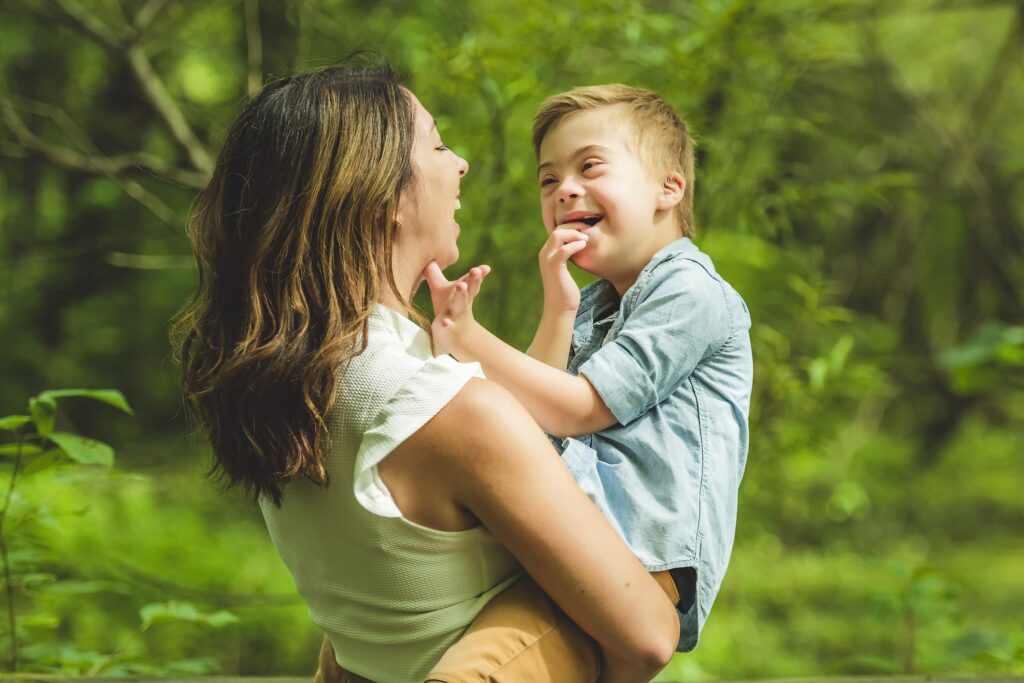
Brittany’s Baskets of Hope on the Today Show
Brittany’s Baskets of Hope celebrates the Down syndrome community, and it hasn’t gone unrecognized.
One of the defining moments of the business came when Brittany Schiavone was a guest on ‘George to the Rescue’. The home renovation show provided a free renovation for her home office. Brittany had been working out of the dim, dusty, unfinished basement of her home. George and his team turned it into an attractive, professional workspace.
She was later invited on the Today Show to discuss the impact Brittany’s Baskets of Hope has had on people. One of the hosts asked her what she says to the families she works with. She said she tells them that babies, kids, and adults with Down Syndrome are “downright perfect”.
That wasn’t the first honour she ever received. In 2019, she was the first person with Down Syndrome to be named the L’Oreal Paris Woman of Worth National Honoree. After a high-profile gala in New York, she was flown to Los Angeles to film a promotional video with Viola Davis where she was awarded $10,000.
What are Brittany’s Plans for the Future?
Brittany has a lot of plans for the upcoming years. She wants to move out on her own into an apartment, keep working, and get married one day. She’s also enrolled in college courses designed to meet her special needs.
Brittany’s Baskets of Hope may one day go beyond the United States and to families all over the world.

IC Inspiration
Kayleigh Williamson wept as she crossed the finish line at the end of the New York City marathon. The event took place on November 5, 2023. A marathon is a monumental undertaking for even the heartiest of athletes. For Kayleigh, it was an extra special achievement.
She was the first woman with Down Syndrome ever to jog across that landmark finish line.
Like so many babies with the condition, her future was not predicted to be very bright. Her doctors told her mother that, if she walked at all, it likely wouldn’t happen until she was at least five years old. Now, she’s not only walking, she’s running great distances.
Her path hasn’t been without challenges. She’s struggled with diabetes and Grave’s Disease along the way.
However, she refused to let any of this hold her back from any of her pursuits. Besides running marathons, she’s also active in sports like swimming, basketball, and the martial arts Krav Maga. She’s even done modelling work for Adidas, and is the author of a children’s book called It’s Cool to Be Me.
Kayleigh is a marvel and an inspiration, not just to the Down Syndrome community, but to all of us. She proves that, with determination, anything is possible. She is the life and spirit of Brittany’s Baskets of Hope. Nothing should hold anybody back, no matter what life throws their way.

The Humane AI Pin is Here! So is Everything You Need to Know

3D Printing in Hospitals Has Saved Children’s Lives

Alef Model A Flying Car Pre-Orders Surge to a Whopping 2,850

New Atmospheric Water Generator Can Save Millions of Lives

Michelin Uptis: Airless Car Tires Emerging in 2024

3D Printed Organs Save Woman’s Life and Accidentally Pave Way for Biology-Powered Artificial Intelligence

Sora AI is Every Content Creators Dream. Its Almost Here!

Colossal Biosciences: The Ultimate Science of De-extinction

Top 5 Genius Plastic Alternatives to Help Save the Planet

A Talking Lamp? Top 5 Unbelievable AI Technologies in 2024
Trending
-
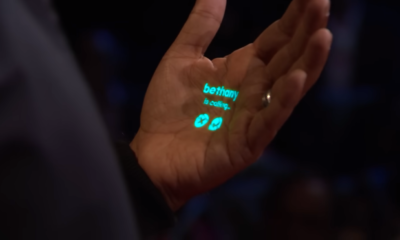
 Technology4 months ago
Technology4 months agoThe Humane AI Pin is Here! So is Everything You Need to Know
-

 Healthcare5 months ago
Healthcare5 months ago3D Printing in Hospitals Has Saved Children’s Lives
-

 Technology2 months ago
Technology2 months agoAlef Model A Flying Car Pre-Orders Surge to a Whopping 2,850
-
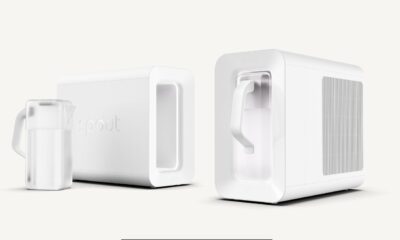
 Technology11 months ago
Technology11 months agoNew Atmospheric Water Generator Can Save Millions of Lives
-
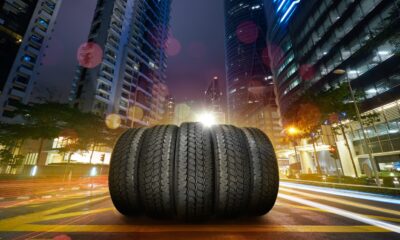
 Technology5 months ago
Technology5 months agoMichelin Uptis: Airless Car Tires Emerging in 2024
-

 Sustainability10 months ago
Sustainability10 months agoTeamSeas Uses Gigantic Robot to Battle Plastic Pollution
-

 Sustainability2 months ago
Sustainability2 months agoArchangel Ancient Tree Archive: Cloning Ancient Trees to Build Strong Forests
-

 Healthcare11 months ago
Healthcare11 months agoNew Brain Technology Restored This Man’s Walking Abilities